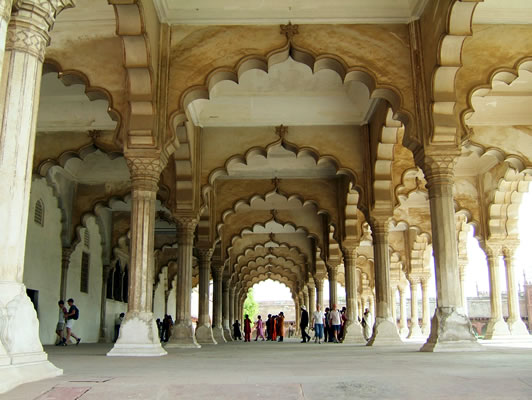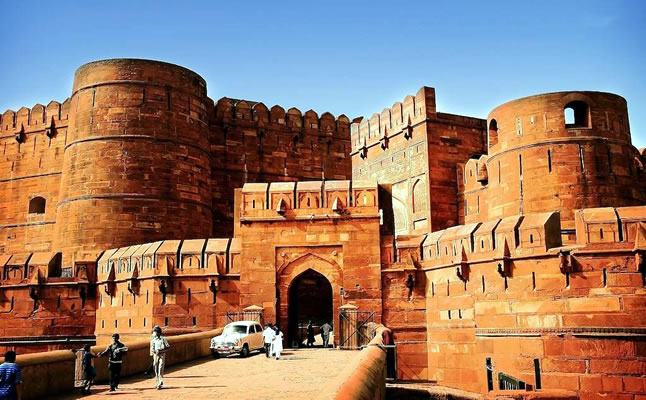Hessing’s Tomb
(1803 A.D.)
Hindi Version | View Gallery |
|
[Not a valid template]This is the tomb of Col. John William Hessing who was dutch and came to Ceylon as a free-lance adventurer. He participated in the battle of Kandy in 1765. Then he served Nizam of Hyderabad and, in 1784, entered the service of the Maratha Chief Mahadji Sindhia. He fought several battles under the command of the French General Do Bolgne. Mahadji trusted him the most, and Hessing accompanied him to Poona in 1792. On Mahadji’s death there in 1794, he returned to Agra which was held by the Marathas. He was made Commandant of the Fort and its Mapatha Garrison in 1799. He died here on 21 July 1803. The Fort was captured by the British the same year. His tomb was built by his children. [Not a valid template]It stands on a square platform which is 11-1/4 feet high and 58 feet side, containing a crypt with the real grave, and a corridor around it. An octagonal chabutara is attached to each corner in the form of a mini-tower. Twin stairways are also attached to it on the western of side with a platform measuring 22×8-3/4 feet. The tomb reposes effectively in the middle of the main platform. It is square in plan with 34-3/4 feet side and 28-1/2 feet in height. Each facade has an iwan in the middle, flanked on either side by ornamental double peshtaq (Alcoves). It is essentially a mughal design, slender turrets are attached to the central iwan-frame. They are crowned by pinnacles, square turrets, 2 feet side, are attached to the corners of the tomb. [Not a valid template]These have vertical flutes and are surmounted by beautiful square chhatris. The tomb is roofed by a double-dome, crowned by Mahapadma (Sheath of Lotus Petals) and Kalash Finial. With pinnacles and chhatris of the turrets, it makes up a perfect superstructure. The interior is a square chamber 17-3/4 feet side with ribs and panels soffit. The cenotaph bears an inscription in English. As a whole, it is a perfectly balanced and beautiful building and is rightly called ‘A Taj in a miniature’. This is, in fact, the most beautiful tomb of a European at Agra, and probably in India though a dutch tomb, it belongs, in letter and spirit, to Agra and to the art of the Jamuna-Chambal region. It marks continuance of Mughal ‘ideas’, ‘feelings’ and ‘skills’ in the 19th century A.D. |




